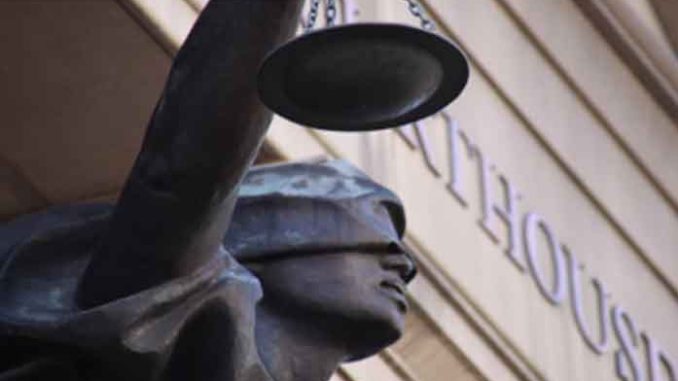
A Sierra Vista man convicted last summer of child molestation is entitled to the new trial he was granted by a judge more than one year ago, the Arizona Court of Appeals announced this week.

Rojas, 33, has remained in the county jail since his conviction while the Cochise County Attorney’s Office appealed the new trial order. His family testified last fall that they were unable to post $200,000 bail, which requires a non-refundable 10 percent fee to the bail-bond company.
The issue before the court of appeals was a video of the jurors listening to Rojas’ testimony. It was recorded and posted by David Morgan who moderates a Facebook page called Cochise County Courts, Crime, Jail, Justice & Politics. Hoggatt told the jurors not to be concerned with Morgan’s camera because court rules prohibit “showing jurors in any manner” but some jurors were identifiable, either directly or indirectly.
On Wednesday, the court of appeals issued an unanimous opinion that Hoggatt did not abuse his discretion when he first denied a defense motion for a mistrial prior to closing arguments but then ordered a new trial after the jury found Rojas guilty. The appellate opinion notes some jurors suggested concerns that being publicly identified via the video might lead to adverse consequences if they voted to acquit Rojas.
The opinion also notes that once jurors learned of the video it became extraneous information that must be “presumed to have caused prejudice” unless shown beyond a reasonable doubt to have not contributed to the verdict.
Cochise County Attorney Brian McIntyre has 30 days to seek review by the Arizona Supreme Court. Otherwise Rojas is entitled to a new trial within 90 days.
McIntyre stated he would comment on the appeals court opinion once he speaks with the girl’s parents.
THE VIDEO

Instead, a juror informed Hoggatt of the Facebook video, reporting that a friend recognized her and had made a negative comment about the case. The same juror also informed the majority of the jurors abut the video.
Hoggatt spent several hours questioning the jurors before denying a defense motion for a mistrial. At the time he sided with the prosecutors who argued all the jurors expressed confidence they could remain fair and impartial. The next day the jury convicted Rojas of a dangerous crime against children, which requires a sentence of life in prison.
But Hoggatt reversed himself Aug. 22, 2018 and ordered a new trial. That order hasn’t taken effect because McIntyre’s office appealed the ruling. The county attorney concedes court rules were violated in relation to the video but argues it had no impact on the jurors’ ability to reach a lawful verdict.
“The posting of the jurors’ images had absolutely no connection to the evidence of the Defendant’s guilt,” the appeal brief states. “The verdict was not tainted or affected by Morgan’s actions.”
The court of appeals disagreed, pointing out Hoggatt was in the best position to assess the situation.
“Upon reflection, the trial court decided that it had not adequately considered the risk of prejudice from these (rules) violations when it denied Rojas’ earlier motion for a mistrial,” the appellate decision reads. “In sum, evidence supports the trial court’s decision that it could not beyond a reasonable doubt conclude that the extraneous information the jury received did not contribute to the verdict.”
In a statement Wednesday, Morgan said his intent in taping some testimony in the Rojas trial with the judge’s permission was to educate citizens about the local judicial system. He positioned the camera behind the jury box to focus on the witnesses and judge but admits failing to refresh himself on the court rule which prohibits showing jurors “in any manner,” even if faces aren’t seen.
“I have never intended to interfere with lawful judicial proceedings or cause delay, cost or anguish to litigants, jurors or court process participants,” Morgan said. “My errors were instructive to me and hopefully to others, as no one in the courtroom reviewed the rules carefully at the moment the decision was made.”
